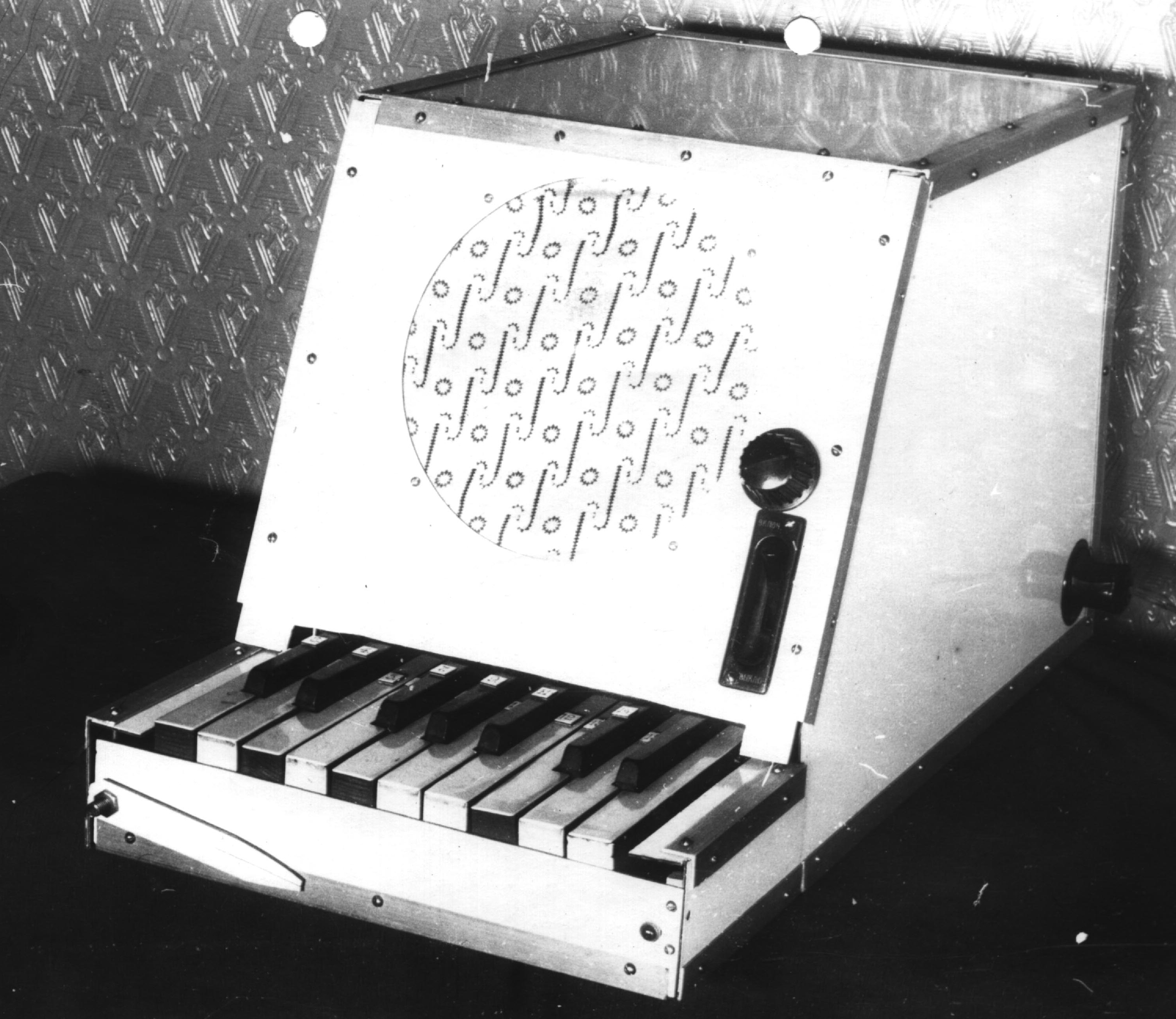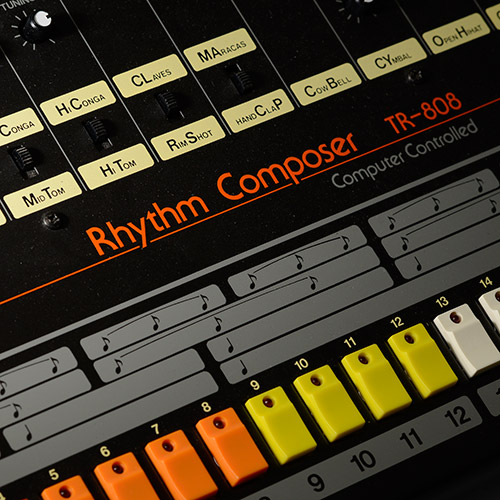Instrumental Instruments: 909
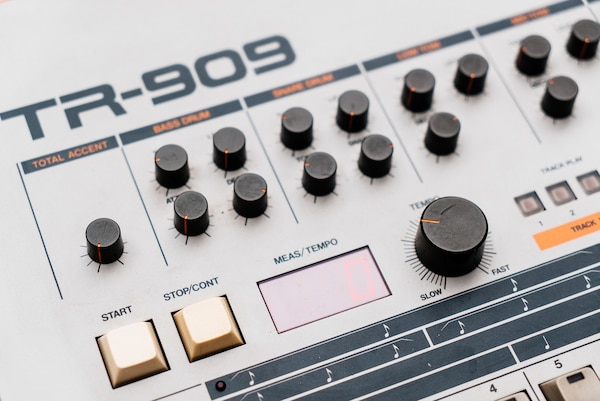
Our series on important music-making devices kicks off with an in-depth exploration of the drum machine that helped define techno
When it went on sale in 1984, the Roland Corporation had high hopes for the TR-909 Rhythm Composer. Created to replace the commercially unsuccessful (but now iconic) TR-808 drum machine, the 909 took the best bits of its predecessor and added a swathe of new features that its creator, Roland’s Head of Research & Development Tadao Kikumoto, believed would make it the most desirable percussion synthesizer in the world.
Its feature set was certainly attractive. Its in-built electronic drum sounds – a combination of pure analogue and early digital samples – weren’t a particularly accurate reflection of the acoustic percussion instruments they were imitating, but they could be manipulated and altered using various rotary knobs and switches.
Meanwhile, the on-board step sequencer could be used to create and store up to 96 rhythm patterns, and there was even room to save eight “songs” – combinations of patterns chained together to create extended rhythm tracks. Throw in MIDI compatibility – a world first amongst drum machines – and you had something powerful, flexible and easy-to-use.
“Roland really took analogue sound technology to the extreme when designing the TR-909,” says Gur Milstein, Head Designer at Eurorack modular synthesizer specialists Tiptop Audio. “It was a complete machine. It had its own sequencer, which is integrated, and talks directly to the drum ‘voices.’ It did this in a parallel format, meaning that it sent its triggers to the drums simultaneously. That’s what makes it ‘groove’ well: the timing of the sequencer. If you take a 909 and hit the play button, it just sounds right immediately.”
Nonetheless, the TR-909 didn’t sell up to the company’s expectations. Within a year they’d ceased production; around 10,000 hand-made units was all the Japanese company would ever manufacture. “Classic musicians looked at the TR-909 – and the TR-808 before it – and didn’t know what they could do with it,” explains Milstein. “I think Roland knew that they had something [good] on their hands, but they didn’t know how they could turn it into something popular.”
Like the TR-808 before it, the TR-909’s eventual success was down to its lack of mass-market appeal. Eventually – and we’re talking years, not months – units could be picked up for next to nothing in pawn shops and second-hand stores. By then, the TR-909 had already been widely used to define two styles of dance music that would go on to take the world by storm: house and techno.
From the very start, both styles were intrinsically linked to the TR-909. Even before “house” had been defined as a musical movement, Chicago DJs Ron Hardy and Frankie Knuckles had been championing music created with the distinctive thump of electronic percussion. Hardy even used the TR-909 to create the clattering rhythm track that underpinned his Italo-disco influenced, early Trax Records favorite “Sensation,” in the spring of 1985.
“I first came across a 909 from hearing the raw energy of the drums in the tracks Ron was playing at the Music Box,” says DJ Pierre. “It made me want to get a drum machine. I was always told ‘get a 909.’ I didn’t know what it looked like, but I knew it was the most raw drum machine I’d ever heard.”
As Chicago’s house revolution gathered pace, the TR-909 became the machine of choice for the city’s dance music pioneers. Assuming, of course, they could get their hands on one. “The thing is, there wasn’t many 909s in the city besides the studios,” DJ Pierre explains. “A lot of the time, you would have to wait until you got to a certain studio to add your drums to the track. You might use other drum machines to create the track, but once you got in the studio, you would replace it with a 909. The other thing was that drum machines would travel around Chicago. Since very few people could afford one, they would get loaned out. It would go from one house to the next.”
A similar system was in operation in Detroit, where Juan Atkins, Derrick May and Kevin Saunderson, amongst others, were busy creating the techno blueprint. “During that time, there really wasn’t anything that could match it, so it was the tool you used,” Saunderson says. “The records that didn’t use it, there was a distinct difference. It was an important element that helped shape our sound. Without it, the records might not have had the same impact.”
As British and European dancefloors began to fall head over heels in love with the heavy, syncopated rhythms of Chicago acid and Detroit techno, a whole new generation of DJs-turned-producers began emulating what they’d heard. At the start, though, few British producers actually knew the identity of the drum machine behind these futuristic American records.
“Until somebody told me, I had no idea that the drums on the Detroit records I loved came from a TR-909,” Altern-8’s Mark Archer admits. “Those were the drum sounds I’d been sampling for our Nexus 21 records in ’88 and ’89. To me, the 909 was the sound of Detroit, and that meant I had to get one to be able to make the kind of tunes that we wanted to.”
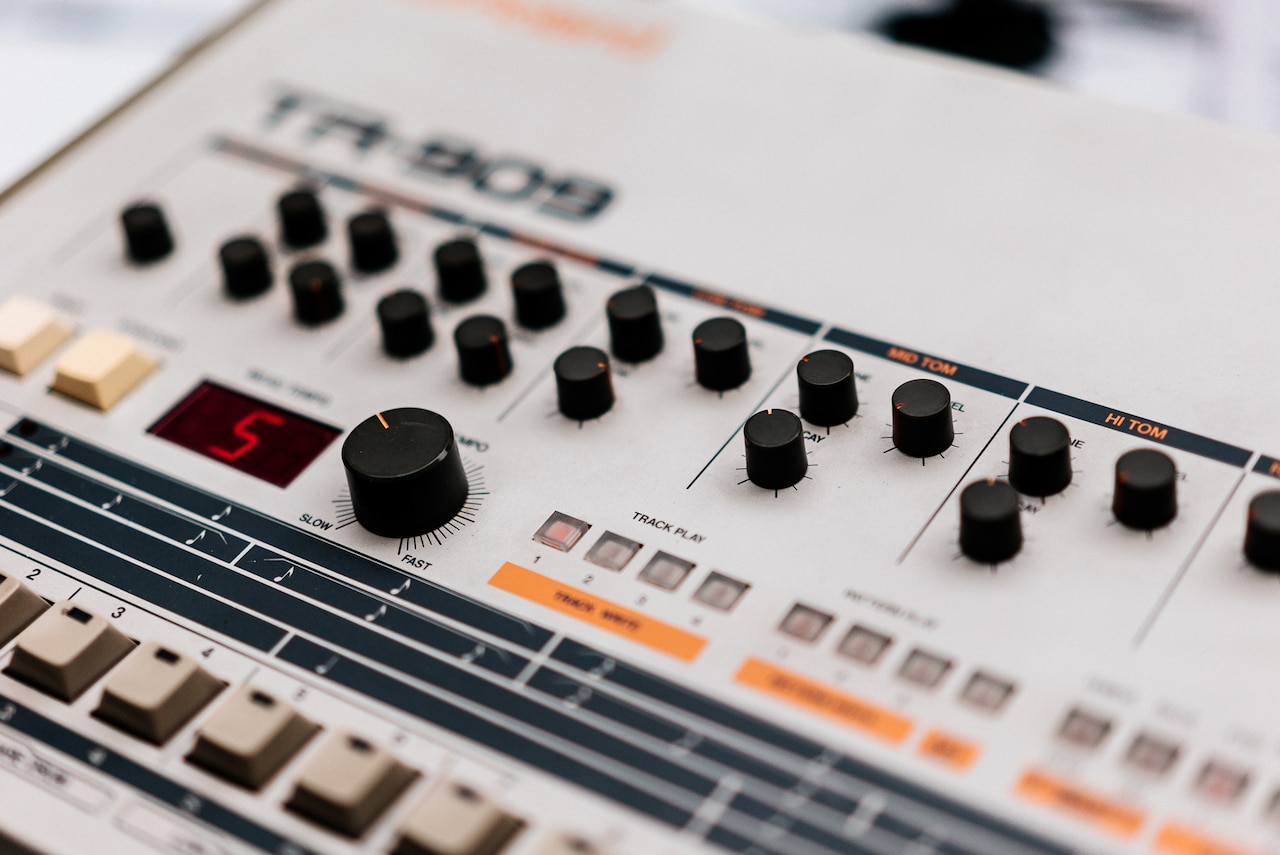
Archer eventually came across a TR-909 unit for the first time in 1990, when visiting Kevin Saunderson’s KMS Studio in Detroit. “Every studio out there had one,” he says. “Kevin said that he had a friend who was selling one. Luckily my record label lent me the money, and it was mine. I got back to the hotel room, plugged it in, and was expecting it to be full of Detroit techno patterns. It was actually full of the kind of patterns that DJ Fast Eddie and Tyree Cooper were using – that hip-house sound. After flicking through the patterns I started trying to program my own. I got to grips with the step sequencer, and pretty quickly I was banging my own patterns out.”
As European dance music’s own relentless rise gathered pace, so too did the demand for TR-909 units. By the early 1990s, Roland’s TR-909 replacement had become one of the most desirable bits of kit around; as essential a piece of studio hardware as the TB-303 bass synthesizer, the SH-101 mono-synth and AKAI’s S-950 sampler.
“I wanted to emulate the Djax records from that period, Plus8 Records and a lot of Chicago records, all of which used a TR-909 heavily,” says British techno veteran Neil Landstrumm. “I eventually tracked one down in 1992. It was £500, which was quite a lot of money, but if you were going to be a techno live act, you needed a 909.”
The TR-909 played a huge role in dance music’s move from the studio to the live arena. It could be used simply to deliver a backing track, thanks to the in-built memory, or as an instrument in its own right. The fact that it can also be chained together with other Roland machines – the Juno range of synths, the TB-303 and the SH-101 mono-synth, for example – also played a role in its attractiveness as a live performance tool.
“The fact that you could sync the 909 with other old machines, like the 303 and so on, meant that it became the hub of the action,” Landstrumm says. “The build quality was superb, and you could rely on them in a live setting. You just needed one – if you didn’t have a 909 you weren’t a techno artist.”
While many of dance music’s early live pioneers – Altern-8, 808 State and Orbital, in particular – may not have jammed out brand new rhythm patterns during live performances, many others subsequently did (most notably, perhaps, Richie Hawtin during his Plastikman phase, and the undisputed master of TR-909 abuse, Jeff Mills).
“It’s a really great machine to get creative on the fly, to just go with your emotions and what you’re feeling on the night,” says DJ Pierre, who regularly uses a TR-909 during Phuture live shows. “It makes it very easy to do that. Whereas other drum machines, and especially computer programs, box you in and make it harder to go outside of whatever your plan was, the 909 doesn’t do that.”
Parisian house and techno producer DJ Deep, who acquired his first TR-909 in the early 1990s, agrees: “Even when you’re facing a crowd, you can play something slightly wrong and it will correct itself. It gives you the confidence to try and be more instinctive.”
The continued desirability of the TR-909 to a new generation of producers and performers – seen in the sheer number of clones and modular imitations now available – is a reflection not just of its build quality, usability and historic status, but also of the enduring quality of its percussion sounds. “When I’m playing live, I need the comfort of having a TR-909 hi-hat sound,” says Factory Floor drummer Gabe Gurnsey. “It’s such a crunchy, heavy sounding hi-hat, that’s very driven. I couldn’t really get that with a TR-808. On stage I drum along to a 909 clone. I can’t really imagine myself drumming without it.”
The kick drum’s got more balls to it than any other drum machine kick drum I’ve heard.
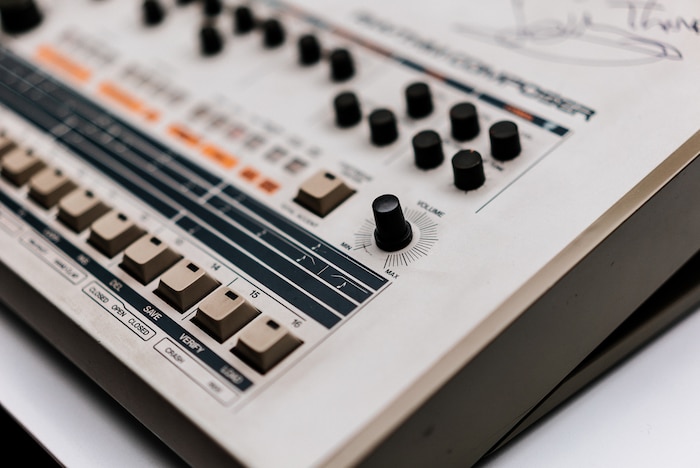
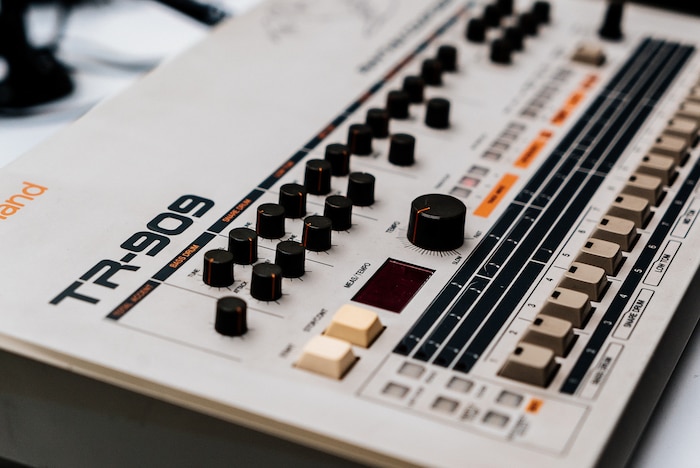
Richard Devine likes another sound better. “It’s the kick drum,” claims the IDM veteran and renowned sound designer. “It’s definitely my favorite. It has a nice, punchy, fast attack, and it’s actually a very versatile voice. I used it hundreds and hundreds of times.”
Gabe Gurnsey enthusiastically agrees with Devine’s sentiments. “The kick drum’s definitely got more balls to it than any other drum machine kick drum I’ve heard,” he says. “Some of the sounds are very playful, but you can get a very pummeling sound out of them. The TR-909 has always been on the edge of being very fun, but also very serious.”
The particular sound of the TR-909’s individual percussion hits – heavy and distinctive, but very obviously electronic and synthesized – is seen by many as the key to the machine’s continued allure.
“Sometimes, you don’t want drums to sound like the real thing, because our music is based on stuff sounding less like real instruments,” DJ Pierre asserts. “Other drum machines were sounding too close to the real thing. We were looking for something different, something more unique sounding. That’s what the 909 is.”
That being said, there are some who believe that house and techno’s continued love affair with the TR-909 is not entirely healthy. Once, the sound of the 909 was futuristic and forward-thinking, its sounds a by-word for a dawn of a new electronic age. It could be argued that those same sounds – whether utilized via an original TR-909, sample packs, cloned machines or modular units – are now overly familiar. Nostalgia is, after all, a powerful thing.
“In some ways, it’s been as much of a curse, as it has been a force,” Neil Landstrumm grumbles. “I think it’s both. Yes, it defined the drum sound for both techno and house, but that limited its appeal straight away. I just don’t like that purist thing that you get in techno. Sure, Jeff Mills used it, but there are other things you can use. The 909 is great, but it’s just ten sounds.”
To use the 909 well, the trick is to make those ten sounds sound like they came from someone unique. “Compare the way Blaze and Underground Resistance use TR-909 sounds,” DJ Deep says. “Obviously those two groups are very, very different musically: one is pure techno, the other New Jersey deep house. Talented producers always find a way to make the machine theirs.”
Compared to some recent drum machine layouts, I still don’t think that the classic Roland boxes can be beat.
The TR-909 was a game changer – one of electronic music’s most iconic instruments. Just as the TR-808 defined electro and hip-hop, the 909 played a similarly historic role in the development of house and techno. “I don’t think dance music would have developed in the same way without it,” John Heckle says. “Compared to some recent drum machine layouts, I still don’t think that the classic Roland boxes can be beat. Simplicity is the key.”
Mark Archer concurs. “30 years of it being continually used in dance music shows how important it has been,” he enthuses. “It’s just as important, if not more so, than the TB-303 or TR-808. Maybe not as many people instinctively know the individual drum sounds of the 909, but it’s the sound of house music.”
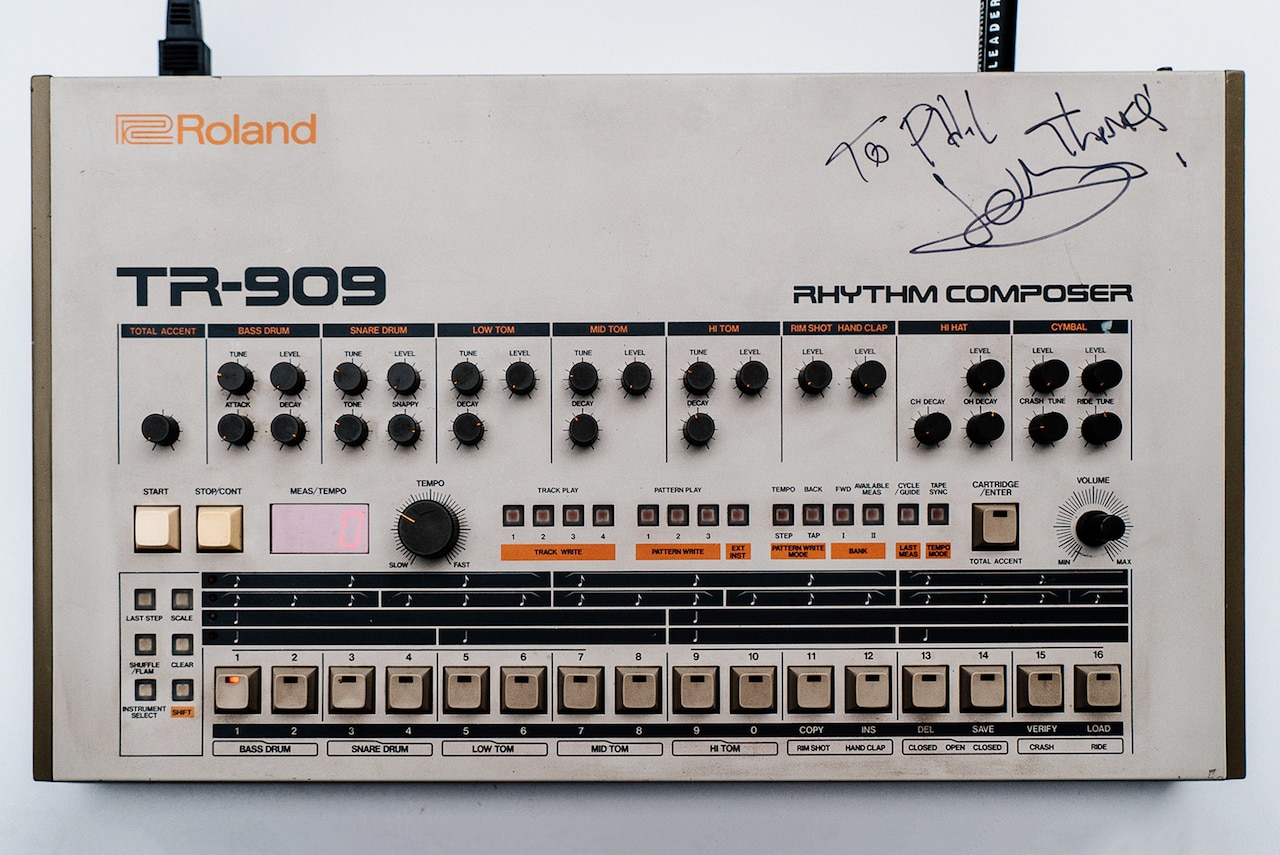
To learn more, listen to the RBMA Radio show Instrumental Instruments: The 909, hosted by Jordan Rothlein and featuring many of the artists included in this article.
Header image © Maxwell Schiano
